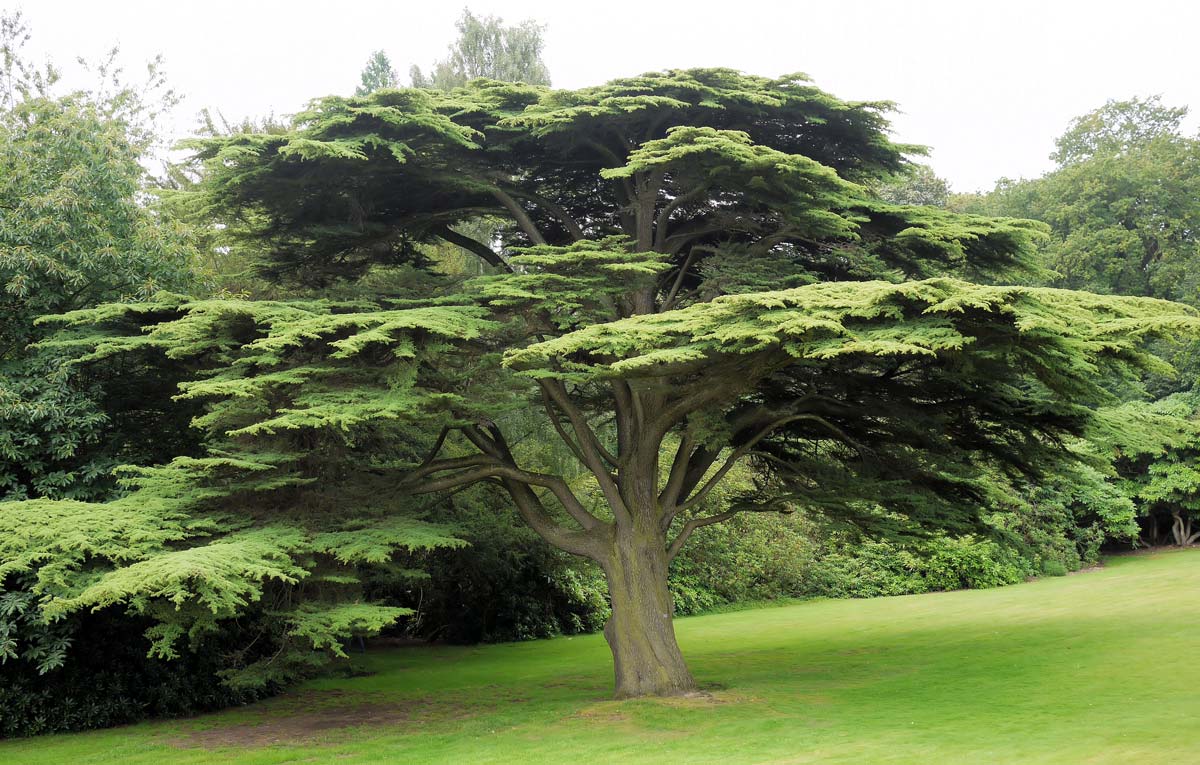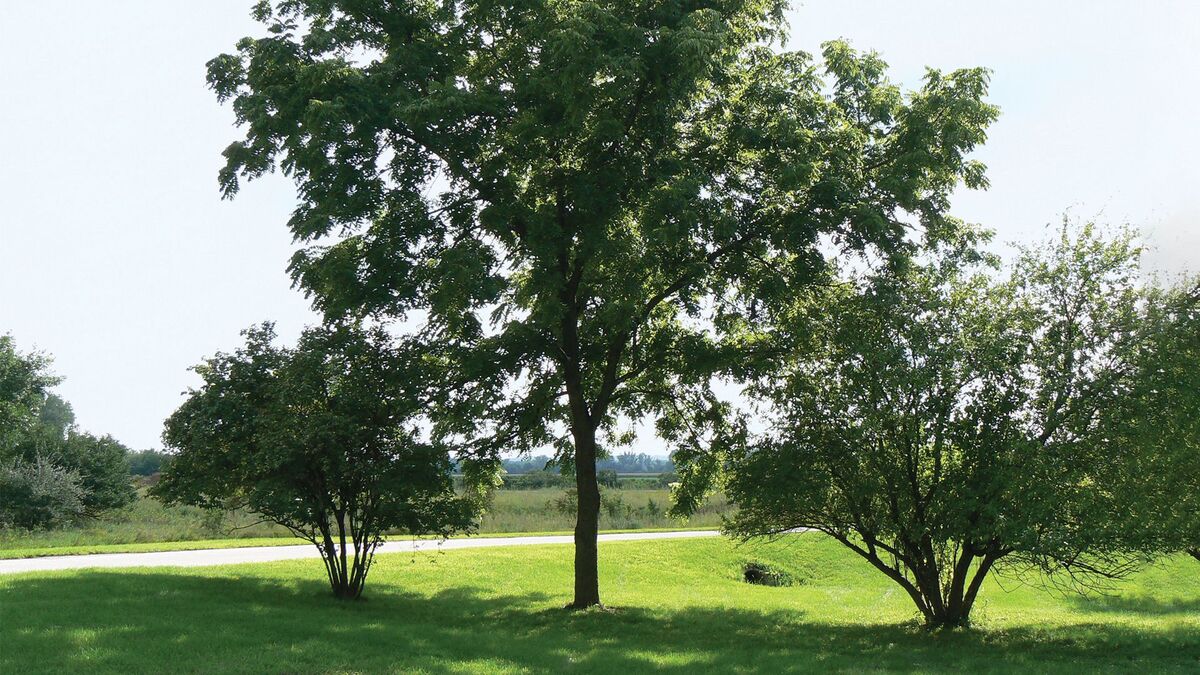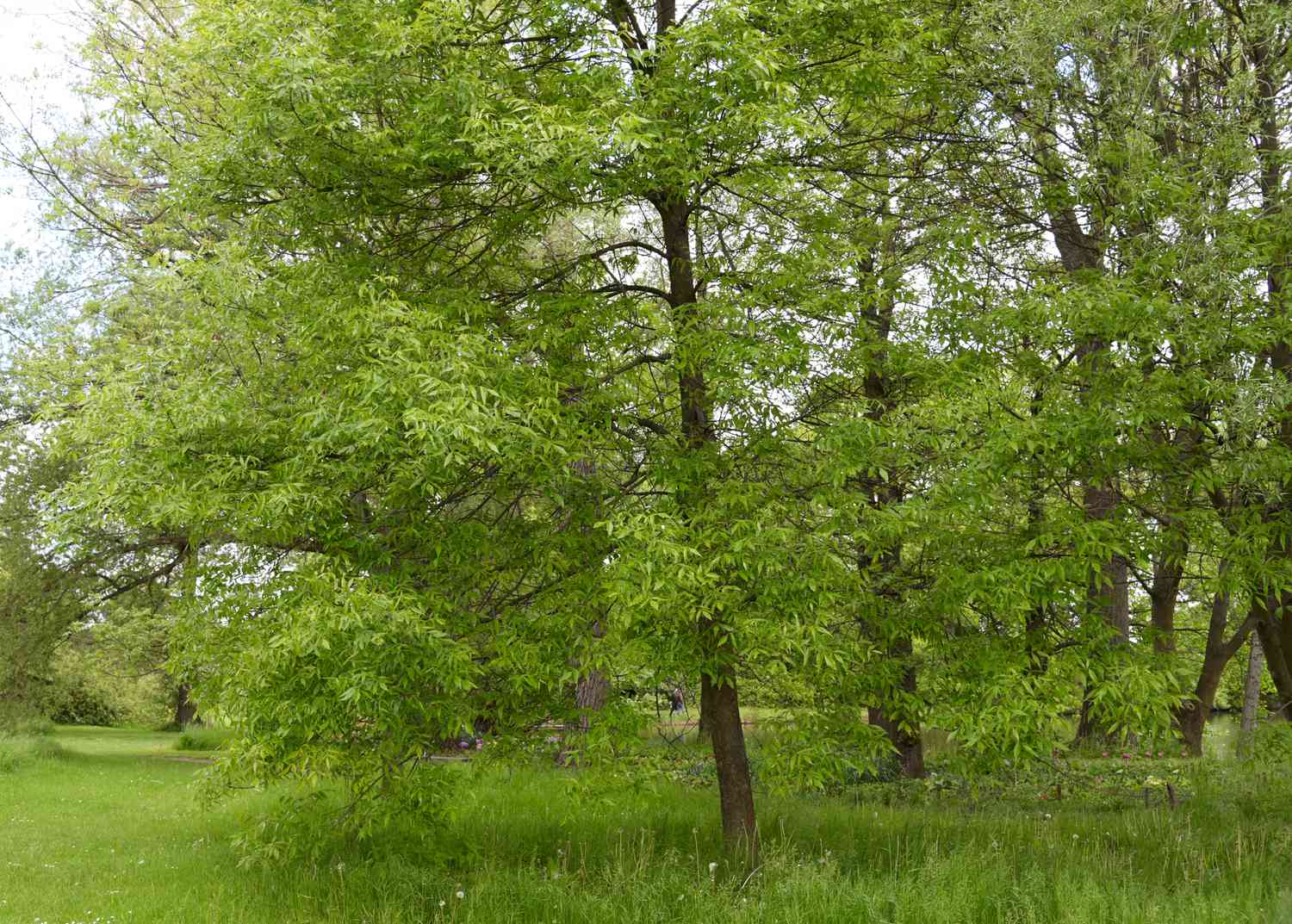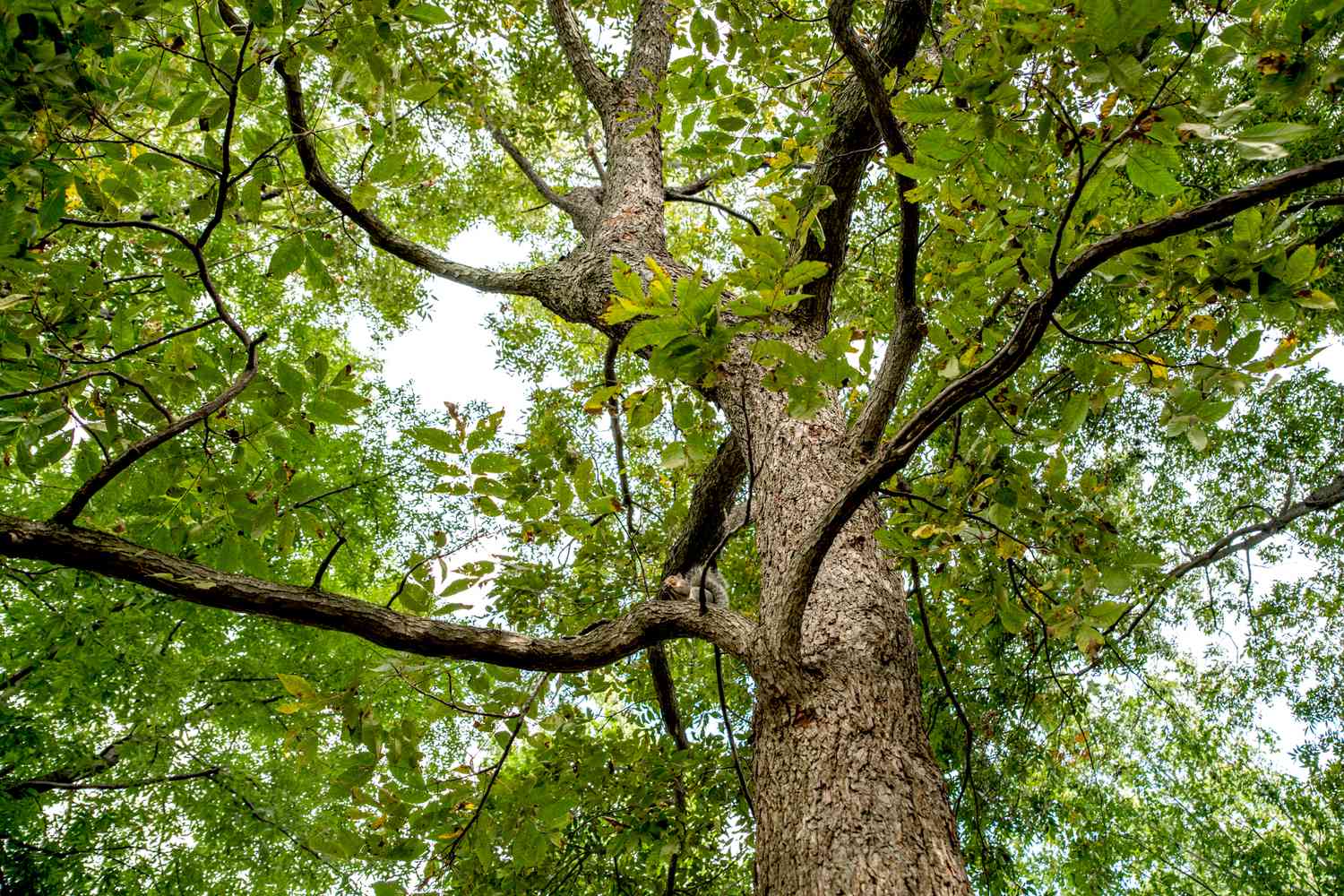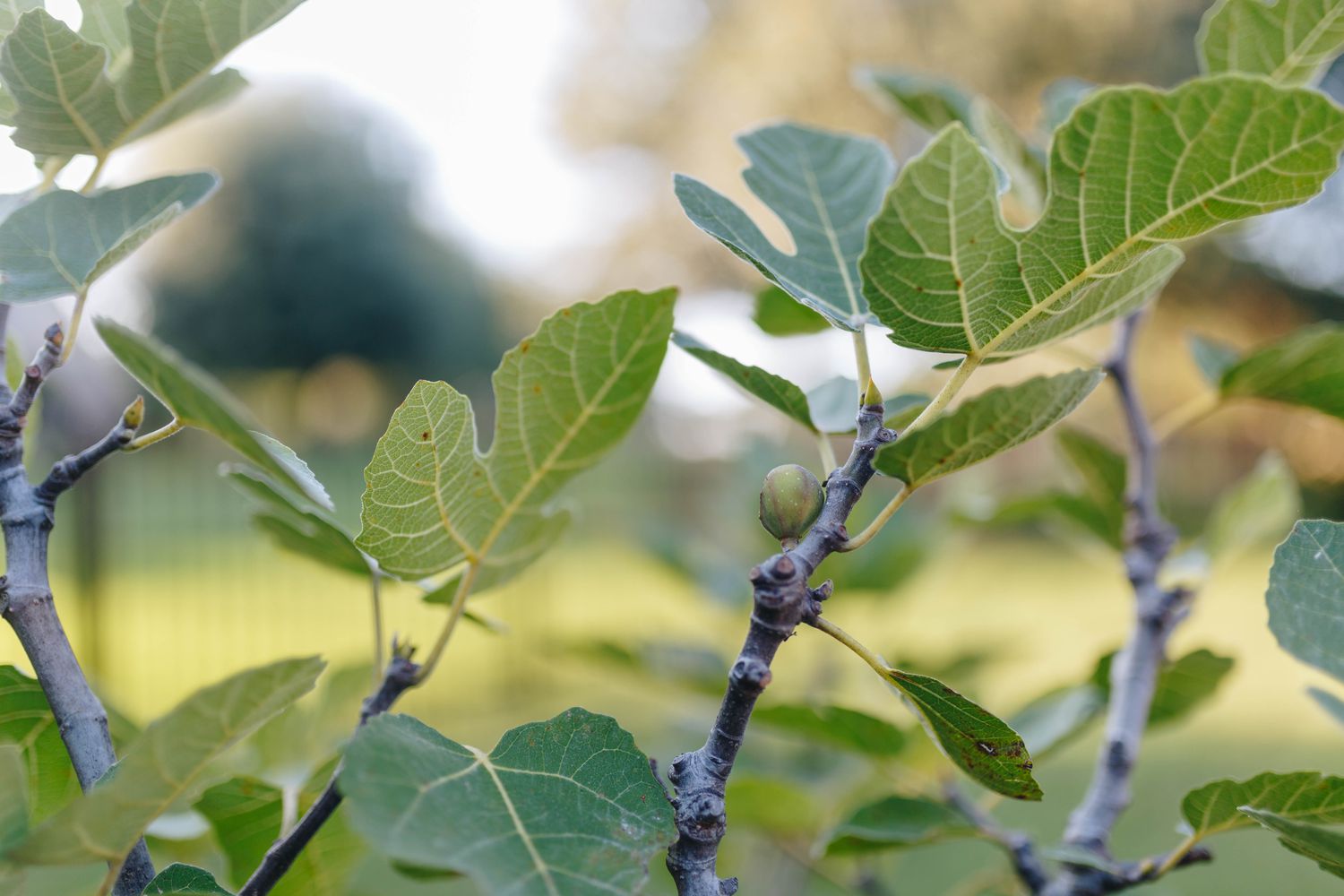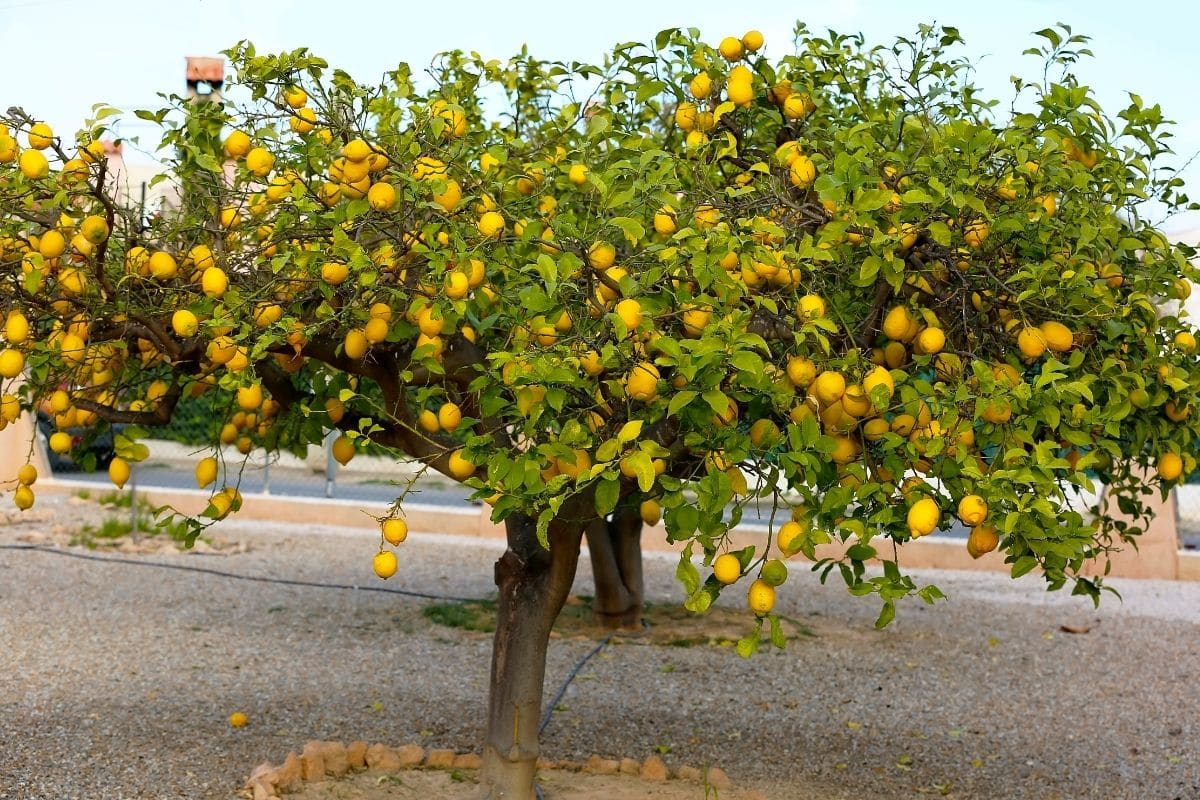Home>Types of Gardening>Edible Gardening>How Do Apple Trees Grow
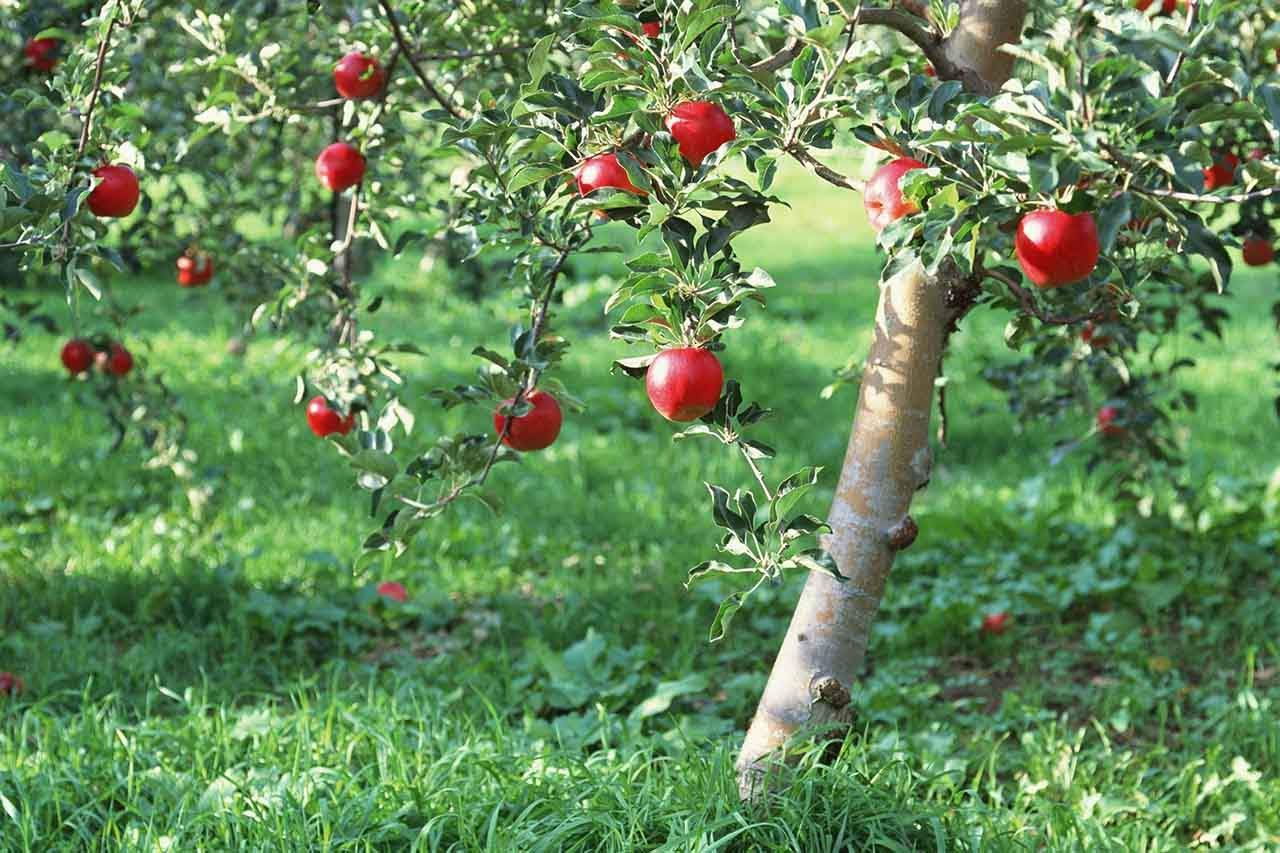

Edible Gardening
How Do Apple Trees Grow
Modified: February 7, 2024
Learn the process of growing apple trees and discover tips for successful edible gardening. Start your own apple orchard with expert guidance from our comprehensive guide.
(Many of the links in this article redirect to a specific reviewed product. Your purchase of these products through affiliate links helps to generate commission for Chicagolandgardening.com, at no extra cost. Learn more)
Table of Contents
Introduction
Welcome to the world of edible gardening, where you can enjoy the rewarding experience of harvesting delicious fruits right from your own backyard. One of the most popular and versatile fruits to grow at home is the apple. Not only do apple trees provide a bountiful harvest, but they also add beauty to your landscape with their vibrant blossoms and lush foliage.
Whether you’re a seasoned gardener or just starting out, learning how to grow apple trees can be a fulfilling and satisfying endeavor. In this comprehensive guide, we will walk you through the process of planting, caring for, and harvesting your very own apple trees.
Apple trees are known for their adaptability and can thrive in a variety of climates, making them accessible to gardeners around the world. By understanding the basic needs of these fruit-bearing trees and following some essential gardening practices, you can cultivate a successful apple orchard that will provide you with a steady supply of juicy, flavorful apples for years to come.
From selecting the right apple tree variety to proper planting techniques, pruning methods, and protecting against common pests and diseases, we’ll cover all the necessary steps to ensure a fruitful harvest. Whether you have a spacious backyard or a small patio, there are apple tree options available that can fit your space and yield a rewarding harvest.
Join us on this edible gardening journey as we dive into the fascinating world of apple trees. Get ready to roll up your sleeves, grab your gardening tools, and embark on a fruitful adventure that will not only satisfy your taste buds but also enrich your knowledge and appreciation for the wonders of nature.
Understanding Apple Trees
Before diving into the practical aspects of growing apple trees, it’s important to have a basic understanding of these remarkable fruit-bearing plants. Apple trees belong to the Rosaceae family and are scientifically known as Malus domestica. They are deciduous trees, meaning they shed their leaves annually, and can reach heights of up to 30 feet.
Apple trees are typically categorized as either standard, semi-dwarf, or dwarf, depending on their mature size. Standard apple trees can grow quite large and require ample space, while semi-dwarf and dwarf varieties are more suitable for smaller gardens or containers.
It’s worth noting that apple trees are not self-pollinating, which means they need cross-pollination from another apple tree of a different variety in order to produce fruit. Some apple varieties, known as “triploid” apples, require pollen from two different apple varieties to produce fruit. Therefore, it’s essential to plant at least two compatible apple tree varieties in close proximity to ensure successful pollination.
Apple trees have different chilling requirements, which refers to the number of hours of cold temperatures they need during winter dormancy in order to break dormancy and set fruit. It’s crucial to select apple tree varieties that match the chilling hours of your specific region to ensure optimal growth and fruit production.
When it comes to soil preferences, apple trees thrive in well-draining loamy soil with a slightly acidic pH level ranging from 6.0 to 7.0. They require full sun exposure, ideally receiving at least 6 to 8 hours of direct sunlight per day. Adequate sunlight ensures proper photosynthesis, leading to the production of sugars and the development of flavorful, juicy apples.
Now that we have a foundational understanding of apple trees, in the next sections, we will explore the step-by-step process of planting, caring for, and harvesting these delightful fruit trees.
Planting Apple Trees
Planting apple trees is an exciting and crucial step in establishing a successful orchard. When selecting apple tree saplings, choose healthy, disease-resistant varieties that are well-suited to your climate and growing conditions. Here are some key steps to follow when planting apple trees:
- Site Selection: Choose a location that receives full sun exposure and has well-draining soil. Avoid areas prone to frost pockets or strong winds, as these can damage young trees and hinder their growth.
- Preparing the Soil: Before planting, loosen the soil in a wide planting hole, ensuring it is free from rocks, weeds, and excessive moisture. Amend the soil with organic matter, such as compost or well-rotted manure, to improve drainage and fertility.
- Digging the Hole: Dig a hole that is wide and deep enough to accommodate the tree’s root system without crowding or bending the roots. The hole should be at least twice the width of the root ball and slightly deeper.
- Planting the Tree: Gently place the tree in the center of the hole, making sure the graft union (the swollen area where the scion and rootstock meet) is slightly above ground level. Backfill the hole with soil, firming it gently around the roots to remove any air pockets.
- Staking: If necessary, stake the tree to provide support and stability while it establishes its root system. Secure the tree to the stake using soft ties, making sure not to constrict the trunk.
- Watering: After planting, thoroughly water the tree to settle the soil and encourage root establishment. Continue to water regularly, keeping the soil consistently moist but not waterlogged.
- Mulching: Apply a layer of organic mulch, such as wood chips or straw, around the base of the tree. Mulching helps retain soil moisture, suppresses weed growth, and insulates the roots from extreme temperatures.
- Pruning: While not necessary at the time of planting, pruning the tree after it has settled in can help shape its future growth and encourage strong, balanced branches.
Remember to follow any additional planting instructions specific to your apple tree variety and consult local gardening resources for guidance tailored to your region. With proper planting techniques, you’ll give your apple tree a healthy start and set the stage for abundant fruit production in the years to come.
Watering and Fertilizing Apple Trees
Proper watering and fertilization are crucial for the health and productivity of apple trees. Maintaining adequate moisture levels and supplying essential nutrients will promote robust growth and a bountiful harvest. Here’s what you need to know:
Watering:
Apple trees require regular and consistent watering, especially during periods of dry weather. Here are some watering tips to keep in mind:
- Frequency: Water young apple trees deeply once or twice per week, ensuring the soil is moistened to a depth of at least 12 inches. Established trees may only need watering during prolonged dry spells.
- Timing: Water in the early morning or late afternoon to minimize evaporation and ensure the roots have adequate moisture before the heat of the day.
- Irrigation Methods: Drip irrigation or soaker hoses are ideal for delivering water directly to the root zone, minimizing water waste and promoting deep root development. Avoid overhead watering, as it can lead to foliar diseases.
- Monitoring: Check the soil moisture regularly by inserting your finger about one inch into the soil. If it feels dry at this depth, it’s time to water.
- Mulching: Apply a layer of organic mulch around the base of the tree, extending it to the drip line. This mulch will help retain soil moisture and reduce water evaporation.
Fertilizing:
Apple trees have specific nutrient requirements for optimal growth and fruit production. Here are some key considerations when fertilizing your apple trees:
- Soil Testing: Conduct a soil test to determine the nutrient levels and pH of your soil. This will help you identify any deficiencies and tailor your fertilizer application accordingly.
- Nutrient Balance: Apple trees generally require a balanced fertilizer with equal amounts of nitrogen, phosphorus, and potassium (NPK). The NPK ratio should be indicated on the fertilizer packaging.
- Timing: Apply fertilizer in early spring before new growth begins. A second application may be beneficial in late spring or early summer, depending on the tree’s overall health and nutrient requirements.
- Application Method: Spread the fertilizer evenly around the drip line of the tree, avoiding direct contact with the trunk. Water thoroughly after application to allow the nutrients to penetrate the soil.
- Organic Options: Consider using organic fertilizers, such as compost, well-rotted manure, or fish emulsion, which not only provide essential nutrients but also improve soil structure and microbial activity.
- Caution: Avoid over-fertilizing, as it can lead to excessive vegetative growth at the expense of fruit production. Follow the recommended dosage and adjust based on soil test results.
By implementing proper watering and fertilization practices, you’ll promote healthy growth and ensure your apple trees are well-nourished throughout the growing season. Remember to monitor the moisture levels and adjust watering accordingly, while providing the necessary nutrients to support the tree’s vitality and fruit development.
Pruning and Training Apple Trees
Pruning and training apple trees are essential practices for maintaining their health, shape, and productivity. Proper pruning helps remove dead and diseased wood, improves air circulation, and allows sunlight to penetrate the canopy, promoting fruit development. Here are key considerations when it comes to pruning and training apple trees:
Pruning:
- Timing: Prune apple trees during their dormant period, usually in late winter or early spring before new growth begins. Avoid pruning in late fall or early winter, as it can stimulate new growth that may be vulnerable to winter damage.
- Tools: Use clean, sharp pruning tools, such as pruning shears, loppers, and a pruning saw, to make clean cuts and avoid causing unnecessary damage to the tree.
- Objective: The primary objectives of pruning apple trees are to remove dead, damaged, or diseased wood, improve the tree’s structure and shape, stimulate new growth, and maintain an open canopy for better light penetration.
- Thinning: Thin out crowded branches to reduce competition and allow for adequate air circulation. Thinning also helps in fruit size and quality by redirecting the tree’s energy into fewer fruits.
- Heading Back: Heading back involves pruning the terminal part of a branch to stimulate side branching. This technique is commonly used to encourage branching and control the overall size and shape of the tree.
- Water Sprouts and Suckers: Remove any water sprouts (vigorous, upright shoots) and suckers (shoots emerging from the base of the tree or rootstock) as they take away valuable resources from the main structure of the tree.
Training:
- Support: When apple trees are young, it is important to provide support to ensure proper growth and prevent branches from breaking under the weight of fruit. Use stakes, trellises, or other support systems to train the tree and maintain its shape.
- Espalier: Espalier is a training technique that involves training the tree to grow flat against a wall or support structure. This method is used to maximize space and create a pleasing, decorative effect.
- Pruning for Fruit Production: Prune with the goal of enhancing fruit production. Remove any crossed or rubbing branches, as well as inward-growing branches that block sunlight from reaching the center of the tree.
- Tree Height: Maintain the height of the tree to a manageable level for easy harvesting and maintenance. Depending on the variety and desired tree size, consider shortening upright branches to encourage lateral growth.
- Annual Maintenance: Regularly assess and prune apple trees each year to maintain their shape, control their size, and promote balanced growth, which results in a higher yield of quality fruits.
Pruning and training apple trees may seem daunting at first, but with practice and knowledge of the tree’s growth habits, you’ll master this essential gardening skill. Remember to always prioritize tree health and focus on creating a strong structure that will support a bountiful harvest for years to come.
Protecting Apple Trees from Pests and Diseases
Apple trees, like any other plants, are susceptible to a range of pests and diseases that can impact their health and fruit production. Taking proactive measures to protect your apple trees will help prevent infestations and ensure a thriving orchard. Here are some strategies to safeguard your trees:
1. Pest Management:
- Monitoring: Regularly inspect your apple trees for signs of pests, such as aphids, codling moths, fruit flies, and apple maggots. Early detection allows for prompt intervention.
- Biological Controls: Encourage beneficial insects, such as ladybugs and lacewings, that feed on aphids and other pests. You can create a welcoming environment for these predators by planting flowers that provide nectar and pollen.
- Physical Barriers: Use physical barriers, such as netting or fine mesh, to protect fruit from birds and larger insects. Ensure the barriers are properly secured to prevent pests from accessing the tree.
- Organic Pest Control: Utilize organic pest control methods, such as neem oil, insecticidal soaps, or botanical extracts, to control pest populations. These options are less harmful to beneficial insects and reduce chemical exposure.
- Integrated Pest Management (IPM): Implement an IPM approach by combining various pest control strategies to minimize pest damage while minimizing environmental impact.
2. Disease Prevention:
- Cultural Practices: Practice good hygiene by removing fallen leaves, fruit, and pruning debris, as they can harbor disease-causing pathogens over winter.
- Sanitation: Regularly clean and disinfect pruning tools to prevent the transmission of diseases.
- Air Circulation: Prune apple trees to improve air circulation within the canopy, reducing humidity levels and minimizing the risk of fungal diseases.
- Fungicide Applications: Apply appropriate fungicides during periods of high disease pressure, following label instructions carefully. Consider using organic or low-toxicity options whenever possible.
- Varietal Resistance: Select apple tree varieties that have natural resistance to common diseases in your area. These varieties are less susceptible to certain diseases and can help minimize the need for chemical interventions.
3. Regular Monitoring:
- Keep a Watchful Eye: Regularly inspect your apple trees for any signs of pest or disease infestation. Look out for abnormal growth, discoloration, fungus, or pest damage.
- Record Keeping: Maintain a record of when pests or diseases are observed, along with the treatments applied. This information will help you track patterns and make informed decisions in future seasons.
- Seek Expert Advice: If you are uncertain about the identification or treatment of a particular pest or disease, consult local horticulture experts or extension services for guidance specific to your region.
By implementing preventive measures, practicing good orchard management, and applying targeted controls when necessary, you can minimize the impact of pests and diseases on your apple trees. Taking a proactive stance against pests and diseases will contribute to the overall health and productivity of your apple orchard.
Harvesting Apples
The moment you’ve been patiently waiting for has arrived – it’s time to harvest your apples! Proper timing and techniques ensure that you’re rewarded with delicious, ripe fruit. Here are some guidelines to follow when harvesting apples:
Timing:
Knowing when to harvest apples is crucial to ensure optimal flavor, sweetness, and texture. The exact harvest time varies depending on the apple variety, so it’s essential to refer to the specific variety’s characteristics. Here are a few general indicators to look for:
- Color Change: Pay attention to the apple’s color. Most apple varieties will develop their characteristic color (e.g., red, green, or yellow) when ripe. However, color alone is not always a reliable indicator.
- Firmness: Gently press the apple with your thumb to check its firmness. Ripe apples should give slightly but not be mushy.
- Starch Conversion: Use a starch iodine test to determine if the apples are ripe. Cut a small section of the apple and apply iodine solution. If the cut flesh turns black or dark blue, it indicates the apples are not yet fully ripe. If it turns brown, it’s a sign of ripeness.
- Taste Test: Sample a few apples by biting into them. Apples that are ready to harvest will have a crisp texture and a balanced blend of sweetness and tartness.
Harvesting:
- Gentle Handling: Handle apples with care to prevent bruising or damaging the fruit. Place harvested apples into a soft container or basket lined with cushioning material.
- Twist and Lift: Gently twist and lift the apple from the branch. If it doesn’t detach easily, it may not be fully ripe. For apples that resist separation, leave them on the tree for a few more days and check again.
- Complete Harvest: Harvest all ripe apples from the tree during each picking session. Leaving overripe or damaged apples on the tree can attract pests or spread diseases.
- Storage: Depending on the variety and the intended usage, some apples can be eaten immediately while others improve with a short period of storage. Follow the specific recommendations for storage temperature and conditions for each variety.
Post-Harvest Care:
- Cleaning: After harvesting, wipe or gently wash off any dirt or debris from the apples. Avoid using detergents or harsh cleaning products.
- Storage: Store apples in a cool, dark, and well-ventilated area with moderate humidity. Keeping them in perforated plastic bags or lined crates can help maintain freshness and prevent moisture buildup.
- Enjoyment: Once the apples have been properly stored, savor the taste and enjoy the fruits of your labor. Use them in various culinary creations or simply enjoy a freshly-picked apple as a healthy snack.
Harvesting apples at the right time ensures the best flavor and quality. By following these guidelines and being attentive to the specific characteristics of your apple varieties, you’ll be rewarded with delicious apples that can be enjoyed throughout the season.
Conclusion
Congratulations! You have now journeyed through the world of apple tree cultivation, from understanding the basics to harvesting the fruits of your labor. By following the steps outlined in this comprehensive guide, you are well-equipped to plant, care for, and harvest your own apple trees.
Starting from the successful planting of your apple trees, you have learned about the importance of selecting the right varieties, preparing the soil, and providing proper care in terms of watering and fertilizing. You have also discovered the significance of pruning and training the trees to ensure their health, shape, and productivity.
Furthermore, you have been equipped with knowledge on how to protect your apple trees from pests and diseases through effective management practices. By implementing preventive measures and practicing regular monitoring, you can minimize the impact of pests and diseases on your trees.
Lastly, we explored the exciting moment of harvesting your apples. By paying attention to timing, using gentle harvesting techniques, and properly storing the fruit, you can enjoy the delicious flavors of your hard work.
Remember, growing apple trees is not just about the end result of a bountiful harvest; it’s also about the joy of connecting with nature, the satisfaction of nurturing plants, and the pleasure of indulging in the fruits of your labor. So, grab your gardening tools, roll up your sleeves, and embark on this fulfilling and rewarding journey of cultivating your own apple orchard.
Now that you have the knowledge and confidence, go forth and enjoy the delights of edible gardening with apple trees. Happy planting and apple harvesting!


